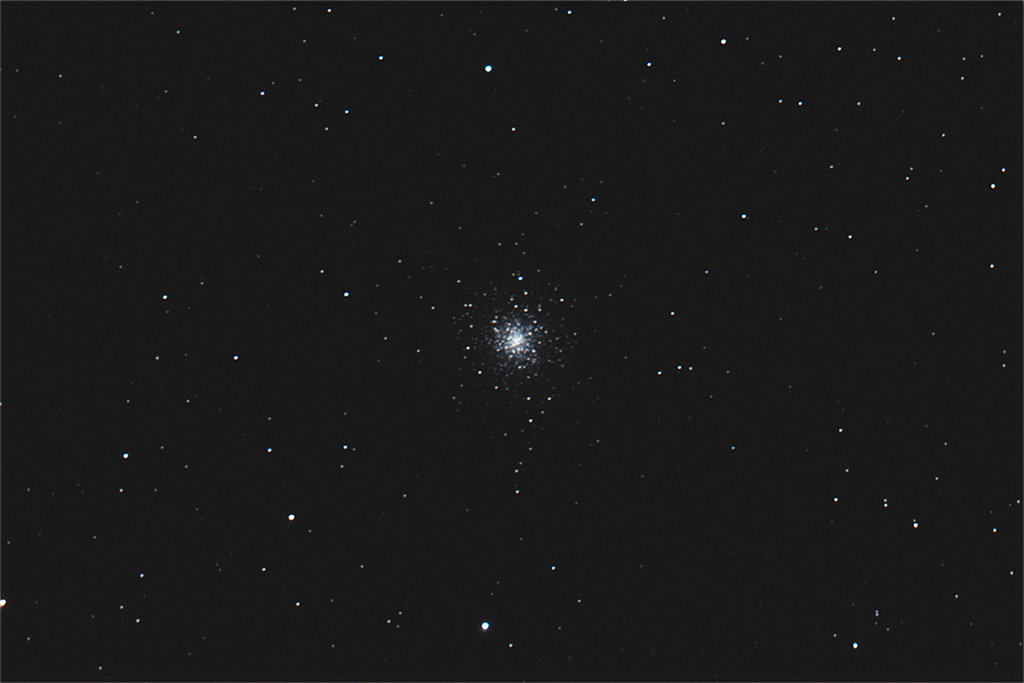
Telescope: Meade 12” LX850 ACF @ f/8, Orion Atlas EQ-G
Camera: ZWO ASI071 MC Pro, -10C, Gain 200
Filter: Orion Imaging Skyglow Filter
Guide scope: Astro-Tech 60mm, ASI290MM Mini, PHD2
Exposure: 37x240sec, saved as FITS
Darks: 32x240s, saved as FITS
Flats: 32x1sec, Tee shirt flats taken at dawn
Average Light Pollution: Bortle 8, poor transparency, bright moonlight
Lensed Sky Quality Meter: 17.1 mag/arc-sec^2
Stacking: Mean with a 2-sigma clip.
White Balance: Nebulosity Automatic
Software: Nebulosity, Deep Sky Stacker, Photoshop
M79 is one of the few globular clusters in the northern hemisphere’s winter sky. Although relatively bright (Mv 7.7), M79 can be a bit of a challenge for backyard observers as it hides low in the south and is often obscured by skyglow. Interestingly, there is some speculation that M79, along with NGC 1851, 2298, and 2808, may not be a native of the Milky Way, but may be associated with the Canis Major dwarf galaxy which is currently passing very close to our galaxy.
This was the next to last test image taken with this new scope and was taken primarily to examine how well the telescope held collimation and guiding near the southern horizon, a location that is particularly challenging for my equipment. The telescope showed a little bit of focus shift after slewing to this location, but remained stable once it was reset. The collimation also remained stable showing no changes after slewing. Guiding also remained spot-on. In fact, it is guiding so well that I might introduce a bit of dithering between images, but that’s for next year. 🙂
M79 is currently well placed in the evening rising in the southeast as the sky darkens. The cluster is located in southern Lepus, about halfway between the ‘feet’ of Orion and the horizon.
Recent Comments